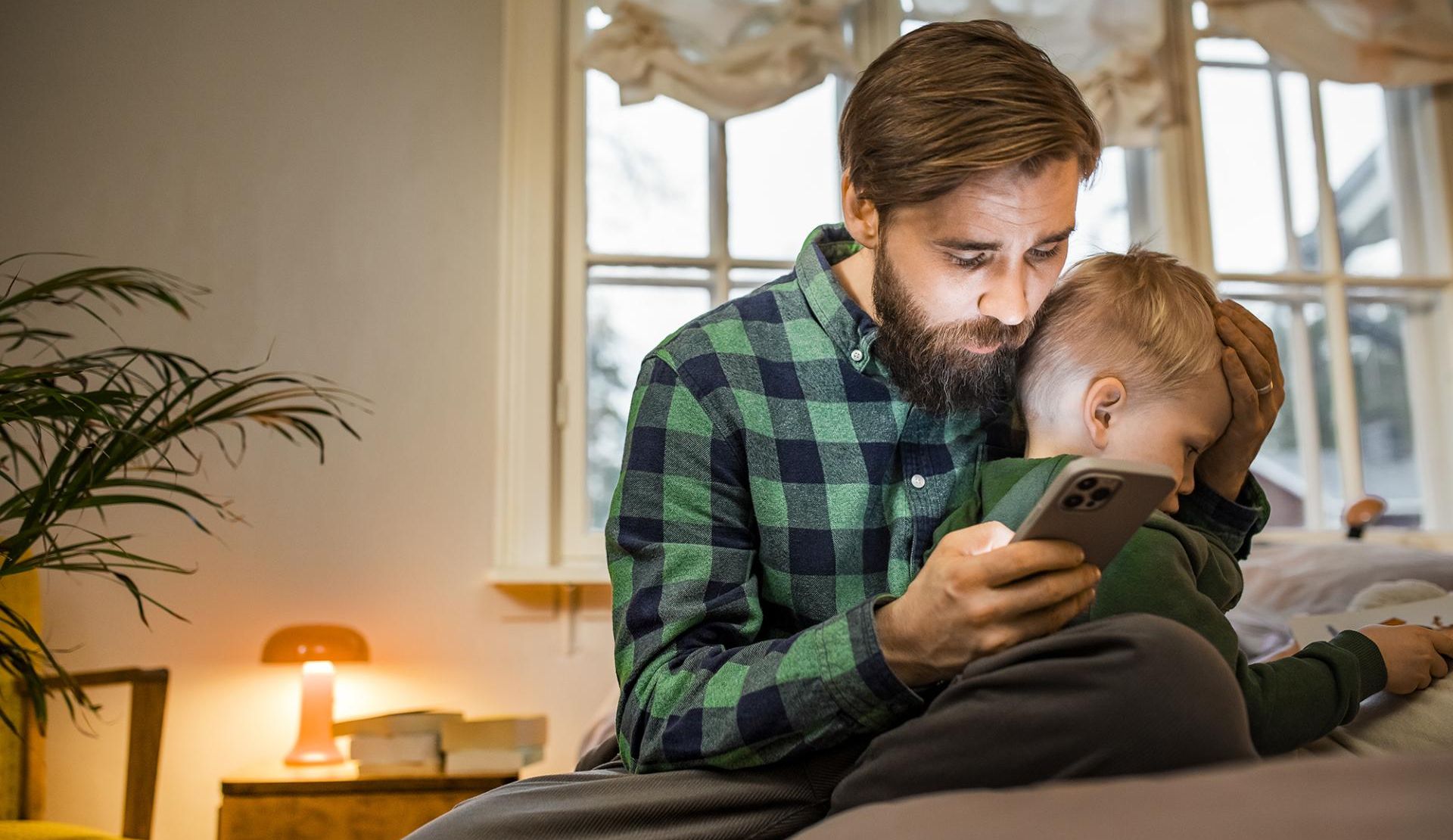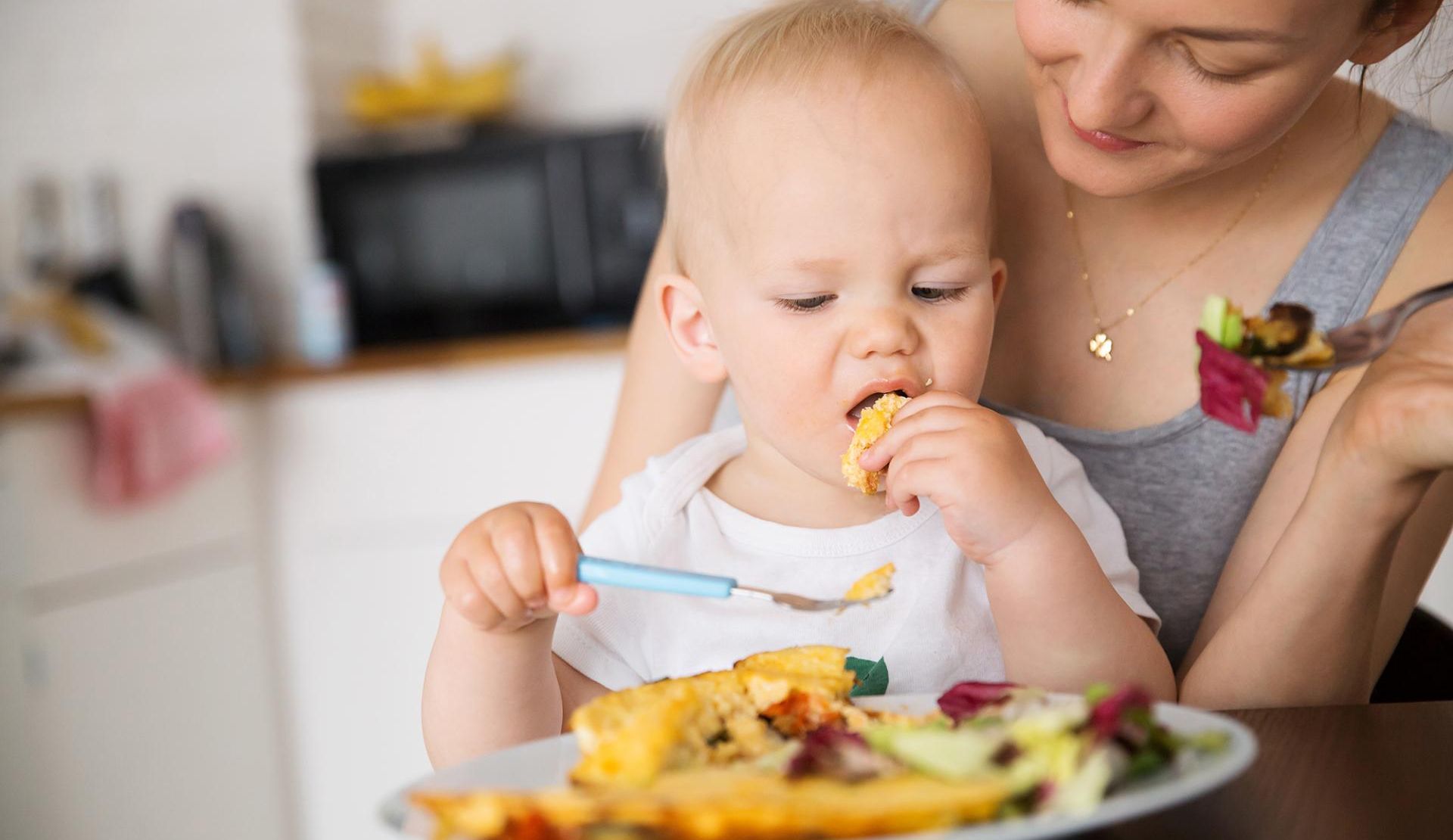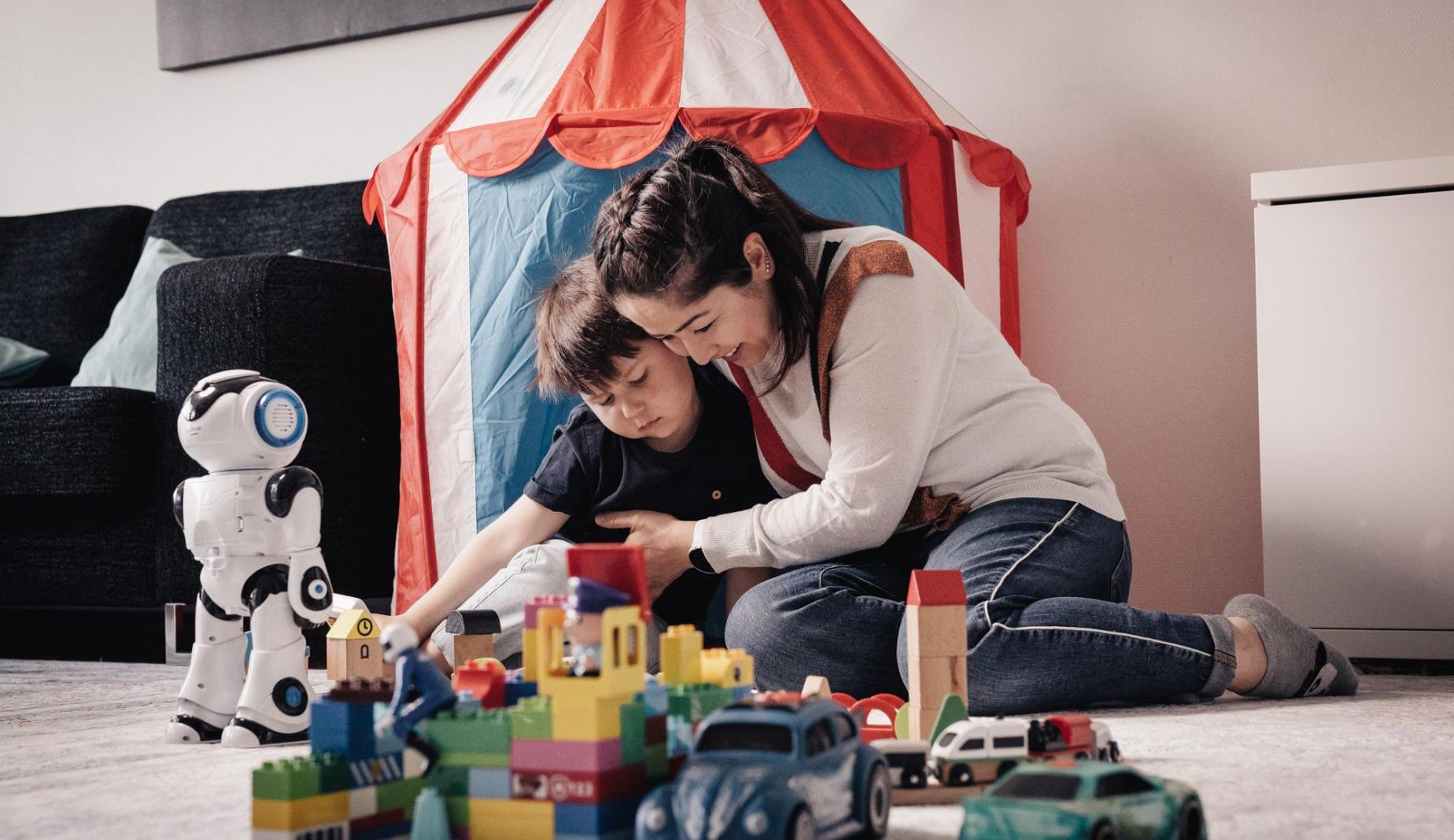
Fever in children – our doctor can help if home remedies do not work or the fever persists
Specialist in the article

Revised 6/12/2023
Fever in children is very common with the flu. Children’s antipyretic helps, as it lowers the temperature.
In brief: Fever in children
- Viral flu is the most common cause of fever in children. The fever may also be caused by a bacterial infection that requires treatment.
- If the fever is high, always give the child an antipyretic, primarily paracetamol, to lower the fever.
- If home remedies do not work, the child's condition worsens or the fever persists, book an appointment with our paediatrician.
Services
Our paediatricians can help when you are worried about your child's fever.
Book an appointment with a paediatricianYou can also consult our general practitioners on how to treat a child with a fever.
Book an appointment with a general practitionerQuestions about fever in children? Our Digital Clinic is a quick and easy way to get answers.
Remote appointments can be used to treat symptoms and diseases that do not require a physical examination.
Go to Digital ClinicConsult the Digital child health clinic to ask questions about your child’s care or parenting. Qualified midwives and nurses provide support 24/7, either for a one-time fee or a fixed monthly fee.
Learn more about the Digital child health clinicIn children, their normal temperature may vary
In children, it is normal for their body temperature to vary during the day depending on how much they move, what they are wearing, and the ambient temperature.
- The best way to take the child’s temperature is to measure it in the armpit.
- The usual limit for a high temperature in children is 37.5 degrees, measured in the armpit.
- Young children may experience a very high fever, up to 40°C. High fever in a child is not dangerous as such, as long as it can be lowered with antipyretics and the child’s fluid intake is sufficient.
How to treat a child with fever at home
It is important to lower fever in children. Here's how to do it at home:
- Paracetamol is the primary antipyretic for children. If the child has a high fever, you can also give ibuprofen or naproxen, available by prescription, if necessary.
- Cold drinks are a nice way to cool down. Fever also increases the need for fluids, so sufficient fluid intake is essential. Juices are a good source of energy if the child does not want to eat.
- Dressing your child in light clothing helps to lower the body temperature.
- Cooling the room temperature, for example, through ventilation, may be a good idea.
- Cold compresses, using damp cloths, are a nice way to cool down.
- Remove any thick covers from the child’s bed and offer a light blanket instead.
Fever in children – when should you take your child to see a doctor?
When your child has fever, you should consult a doctor if:
- your child is a baby under three months old
- home care does not help to lower the fever
- the fever continues for more than a week
- the child’s general condition deteriorates
- the child has problems with peeing
- the child has an earache
- the child has a severe headache
- the child has severe abdominal pain
- the child has fever frequently.
If you a worried about fever in your child, you should take your child to see a paediatrician, as further tests are often necessary to find out what is causing the high temperature.
Fever in children – the causes are many
A child's fever can be caused by a variety of reasons:
- Viral flu is the most common cause of fever in children.
- A bacterial infection, such as an ear infection, bronchitis, or sinusitis, can also cause fever.
- Pneumonia , which can be caused by a virus or a bacterium.
- Inflammatory diseases such as rheumatism or the rare Kawasaki disease may cause recurring fever in children.
- Pediatric cancers, such as lymphomas and leukaemia, are rare causes of persistent fever in children. However, it is good to bear in mind that cancers cause other symptoms as well, such as pain in the limbs, abdominal bloating and swelling in the lymph nodes.
A child's febrile seizure can seem frightening
Children under school age may develop a febrile seizure. The seizure can seem frightening, especially when it occurs for the first time. The reassuring thing is that the child is not in danger during the febrile seizure.
This is good to know about febrile convulsion seizure in children:
- Symptoms. The limbs become stiff and twitch, shake, or have jerking movements during the febrile seizure, and some children go limp. The child’s eyes wander and the child will not respond or look at you.
- Duration. Febrile seizures usually last for no more than a couple of minutes.
- Treatment. Keep your child safe and prevent them from injuring themselves, put your child in the recovery position (on their side) and make sure that they can breathe freely.
- See the doctor. Medical help by a doctor is needed when your child has a febrile seizure for the first time or has a seizure that lasts for more than five minutes or feels unwell after the seizure.
The specialist for this was our paediatrician, Laura Pöyhönen.
Prices for appointments with specialists, such as gynaecologists, dermatologists, cardiologists, orthopaedists and ophthalmologists, can be found in our appointment booking service.
| Service | Price estimate |
|---|---|
| Appointment with a specialist, 20 min Price per appointment. | from 118,10 € Without Kela reimbursement from 148,10 € |
| Appointment with a specialist, 30 min Price per appointment. | from 141,10 € Without Kela reimbursement from 171,10 € |
| Appointment with a specialist, 45 min Price per appointment. | from 177,10 € Without Kela reimbursement from 207,10 € |
| Gynaecologist's appointment, 20 min | from 83,10 € Without Kela reimbursement from 153,10 € |
| Gynaecologist's appointment, 30 min | from 90,10 € Without Kela reimbursement from 160,10 € |
| Dermatologist's appointment, 20 min | from 122,10 € Without Kela reimbursement from 152,10 € |
| Dermatologist's appointment, 30 min | from 137,10 € Without Kela reimbursement from 167,10 € |
| ENT doctor's appointment, 20 min | from 120,10 € Without Kela reimbursement from 150,10 € |
| ENT doctor's appointment, 30 min | from 144,90 € Without Kela reimbursement from 174,90 € |
| Paediatrician's appointment, 20 min | from 120,10 € Without Kela reimbursement from 150,10 € |
| Paediatrician's appointment, 30 min | from 144,90 € Without Kela reimbursement from 174,90 € |
| Orthopaedist's appointment, 20 min | from 120,10 € Without Kela reimbursement from 150,10 € |
| Orthopaedist's appointment, 30 min | from 144,90 € Without Kela reimbursement from 174,90 € |
| Appointment with a psychiatrist, 45 min Price per appointment. | from 123,70 € Without Kela reimbursement from 173,70 € |
| Appointment with a psychiatrist, 60 min Price per appointment. | from 172,10 € Without Kela reimbursement from 232,10 € |
| Ophthalmologist's appointment, 30 min | from 144,90 € Without Kela reimbursement from 174,90 € |
| Ophthalmologist's appointment, 45 min | from 200,10 € Without Kela reimbursement from 230,10 € |
Related symptoms
Children's sleep problems are manageable – a pediatrician supports the whole family
Ear infection in children and babies
Hand, foot and mouth disease in children
Head lice – if getting rid of head lice is not possible at home, you can seek help from a doctor
Looking to get rid of pinworms? If eradication is not successful, our doctor will help
Meningitis in children and babies—how to recognise alarming symptoms
Mononucleosis – uncomfortable symptoms and fatigue can make life difficult for a long time
Other related services
Dental check-up for children and young people
Specialist dental check-up visit for children and adolescents.
Paediatric physiotherapy
Rehabilitation provided by a physiotherapist that aims to promote the child's functional capacity and mobility.
Vaccinations for babies and children – Frequently asked questions
Frequently asked questions about fever in children
Take the child's temperature, preferably by placing the thermometer in the armpit. If this is not possible, you can also use an ear thermometer.
The usual limit for a high temperature in children is 37.5 degrees.
In children, the temperature can be as high as close to 40 degrees. High fever is not dangerous for children, if you manage to lower it with antipyretics. It is also important for the child to drink a sufficient amount of fluids.
When a child has fever but no other symptoms, the fever may, for example, indicate a latent bacterial infection, such as a urinary tract infection. A bacterial infection usually requires antibiotic medication, so if there is no obvious cause for the child's fever, it is advisable to take your child to see a doctor within a couple of days.
Fever in a child without flu may indicate an illness that requires treatment if it lasts for a long time or recurs frequently.
In children, a sudden and short-lived fever can be a very common symptom of viral flu. Sometimes the fever passes within a day.
In children, fever rarely continues for more than a week. Take your child to see the doctor if the fever does not subside within a week. During the doctor’s appointment, the child can be examined and the cause of the fever determined.


